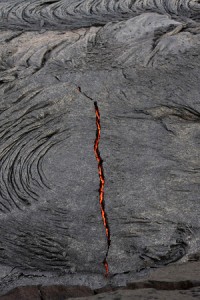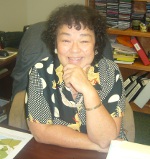ANALYSIS: Geothermal Relocations Taking Millions From Fund (Part 1 of 2)
A program initiated in the 1980s to aid the relocation of residents affected by the construction of a geothermal power plant in Puna could be drifting away from its original intent, according to sources within the county government.
Back in 1995, the Hawaii County Council amended the county code to allocate the county’s share of geothermal royalties paid by Puna Geothermal Venture toward a “Geothermal Relocation Fund.”
More changes were made about a decade later that changed the name of the fund to the Geothermal Relocation and Community Benefits Fund and its function to allow any royalties not used for relocations to be deployed for community benefits in the Puna district.
How the relocations were handled was left almost entirely up to the county Planning Department, which was expected to draft a set of rules for the program.
The council’s sole requirement? That the county would only be allowed to purchase homes at up to 130% of tax-assessed value.

The future role of geothermal energy is the subject of deep political divisions. Photo by Ben Gaddis.
Mission Drift?
In the original rules drawn up by the planning department, a priority was given to homes built or permitted before the power plant’s construction in 1989 and located within one mile of it.
Prior to 2012, the few relocations the county approved fit that “priority” description, and millions of dollars were left over in the fund, eventually spent on various improvements in the Puna district.
But a surge in applications since 2010 has been followed by a major shift in how geothermal royalties have been spent. According to documents obtained from the planning department:
- Between 1998 and 2012, the county approved and purchased 6 homes at a total cost of $698,466. All 6 of these homes were built prior to the construction of the power plant, and within one mile of its location.
- Prior to 2012, a total of $3,338,406 was spent on community benefits for the Puna district. Among those benefits were $700,000 for the Pahoa Transfer Station, $800,000 for road repaving, and $380,000 for the purchase of a Hele-On Bus to service the Pahoa area.
- Since 2012, the county has designated 25 homes for purchase, at a tentative total cost of $5,437,649 (there is currently not enough money in the fund to cover those purchases, and details of some of them still must be worked out). Of these, 24 were built after the power plant’s construction, though all are located within one mile of PGV.
- Due to the surge in relocation requests, there are now no funds available for community benefits.
Decoding the Code
It’s worth noting that none of the eight council members who approved the 1995 amendment to the county code are in office today, nor is then-planning director Virginia Goldstein still on the job.
Left to interpret both the council’s amendment and the rules drawn up over 17 years ago has been the job of current planning director, Bobby Jean Leithead-Todd, and her staff.
Editor’s note: Due to a cabinet reshuffle announced this week, Duane Kanuha will be the new director of planning, replacing Leithead-Todd.
Although the application reviews and purchases are handled by multiple people (including county-selected real estate agents) all final purchase decisions and approvals are at the director’s discretion.
According to Leithead-Todd, “22 or 23” of the 25 applications approved in 2012 were filed over a very short period of time in the summer of that year. Reasons for the sudden surge aren’t entirely clear, though publicity surrounding the relocation program spiked during debates over geothermal-related bills introduced by former Councilman Dominic Yagong.
Leithead-Todd explained that the planning department, faced with an unprecedented demand for relocations, turned to its own rules and the county code for guidance.
With the council’s 17-year-old amendment vague, and the department’s own rules only stating a “priority” for homes built or permitted prior to 1989, the director made the decision that the county must approve 25 of the applications, despite all but one being built after the 1989 cutoff.
Editor’s note: 27 applications have been filed in total since 2012. Two were rejected due to their status as vacant land.
As for her own views on the expansion of the relocations, Leithead-Todd explained that she believes the original intent of the program was to help “the people that were already there” prior to the power plant’s construction in 1989, adding “they didn’t sign up for this.”
Next week in Part 2, we’ll examine how (and if) the geothermal relocation program might come to an end.













